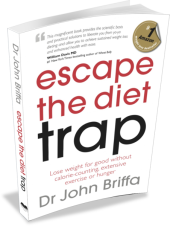One of my blogs last week focused on the potential impact statins have on the development or symptoms of dementia. Interest in this area is an example of the growing recognition that statins have the ability to affect brain functioning. As I briefly mentioned last week, even the Food and Drugs Administration in the US has recognised the potential for statins to induce symptoms such as memory loss, forgetfulness, and confusion.
There is no doubt that statins have the potential for toxicity. However, any direct affects on the brain has generally been believed to be related to the ability of statins to cross what is known as the ‘blood-brain-barrier’. An agent’s ability to breach the blood brain barrier is traditionally thought to be related to several factors, including its affinity to fat or water. Substances that have a high affinity for fat are described as ‘lipophilic’ and have traditionally been believe to cross the blood brain barrier relatively easily. On other hands, conventional wisdom tells us that substances with a high affinity for water (‘hydrophilic’ compounds) do not cross the blood brain barrier readily.
It is known that some statin drugs such as atorvastatin (Lipitor) are lipophilic, white others such as pravastatin (Pravachol) are hydrophilic. In theory, atorvastatin would be expected to be more likely to have adverse effects on the brain compared to pravastatin.
This week saw the publication of a study in which rats were treated for 18 days with one of two statins: pravastatin (Pravachol) or atorvastatin (Lipotor) [1]. Before during and after treatment, the rats were subjected to a learning test. This was adversely affected by pravastatin but not atorvastatin. The animals were also subjected to a memory task, which was also adversely affected by pravastatin but not atorvastatin. The adverse effects induced by pravastatin were ‘reversible’ (resolved on discontinuation of the drug).
These results are the perhaps the opposite of what one might expect from the theory of the propensity of different statins to gain access to the brain. However, the authors of the study point out that pravastatin tends to distribute itself more widely in the body than atorvastatin, and this may ultimately increase pravastatin’s ability to gain entry to the brain.
As to how statins may impair brain function, the researchers suggest one potential mechanism directly relates to lowered cholesterol levels. Cholesterol is required, among other things, for the formation of the fatty sheathes (myelin sheathes) that surround nerves, and any disruption in this may impair neurological functioning. Cholesterol also contributes to the functioning of ‘synapses’ – the tiny gaps between cells via which nerves communicate with each other.
I suspect we have much to learn about the potential for statins to disrupt brain function, and this recent animal study is only a small piece in the puzzle. However, it does support the idea that different statins can pose different risks here, and suggests that the conventional wisdom on lipophilic statins being more hazardous than hydrophilic ones may not actually hold true.
References:
1. Stuart SA, et al. Chronic Pravastatin but Not Atorvastatin Treatment Impairs Cognitive Function in Two Rodent Models of Learning and Memory. PLoS ONE 8(9): e75467 [hr]
[box style=”rounded” border=”full”]
Dr John Briffa’s best-selling ESCAPE THE DIET TRAP – lose weight without calorie-counting, extensive exercise or hunger is available in the UK and US
“This magnificent book provides the scientific basis and practical solutions to liberate you from yo-yo dieting and allow you to achieve sustained weight loss and enhanced health with ease.”
William Davis MD – #1 New York Times bestselling author of Wheat Belly
To read some of the dozens of 5-star reviews for this book [button link=”http://www.drbriffa.com/amazon-reviews-for-escape-the-diet-trap/” color=”silver” text=”dark” window=”yes”]click here[/button]
To buy a paperback copy of the book from amazon.co.uk [button link=”http://www.amazon.co.uk/Escape-Diet-Trap-John-Briffa/dp/0007447760/ref=tmm_pap_title_0?ie=UTF8&qid=1324815918&sr=1-1″ color=”orange” window=”yes”]click here[/button]
To buy a kindle version of the book from amazon.co.uk [button link=”http://www.amazon.co.uk/Escape-the-Diet-Trap-ebook/dp/B005ODY0RW/ref=tmm_kin_title_0?ie=UTF8&qid=1324815918&sr=1-1″ color=”orange” window=”yes”]click here[/button]

To buy a print copy of the book from amazon.com [button link=”http://www.amazon.com/Escape-Diet-Trap-calorie-counting-extensive/dp/0957581602/” color=”orange” window=”yes”]click here[/button]

To buy the kindle version of the book from amazon.com [button link=”http://www.amazon.com/dp/B00BLQ40QM” color=”orange” window=”yes”]click here[/button]
[/box]